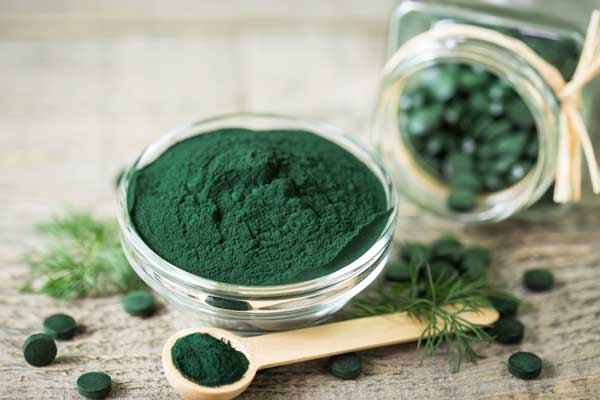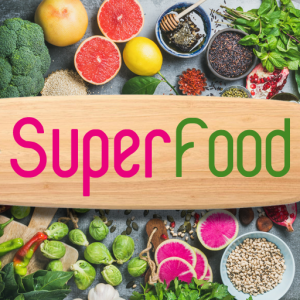The intellectual source of food security goes back to the food crisis in the world in the early 1970s and even before that, the Declaration of Human Rights in 1948, the International Covenant on Economic, Social and Cultural Rights and the International Covenant on Civil and Political Rights. At the end of 1960, the world faced the threat of severe food shortage and famine, and in this regard, the World Food Conference in 1974 paid attention to the issue of food security with this definition:
“Centralized supply of basic food products in order to continuously improve food consumption and neutralize the effects of production and price fluctuations”
Careful attention to this definition showed that the main means of ensuring food security is the continuous supply of basic food products. In other words, this definition sees the answer to the problems of hunger and malnutrition in the field of supply. World experiences in the 1970s showed that improving the supply alone is not the answer to solving the problem of malnutrition. The improvement of supply in these years was obtained by using new technology.
In the 1980s, in the shadow of experience and research, extensive theoretical developments of food security took place, and the reflection of these developments can be seen in the following definition.
“All people’s access to sufficient food at all times for a healthy and active life, so that in this definition, the consumer’s access to sufficient food (fullness of cells) is emphasized at all times, and the ultimate goal of consuming a healthy and active life, or in other words, health Society
be.” The main cause of food insecurity can be rooted in population growth and competition for access to limited food resources, along with political economy and the pressure of global food producers, and food sovereignty at the international level is the right to choose food and agriculture policy by any country with the preservation The indigenous people of each country know the rights to use and manage land, territories, seeds, livestock and biodiversity.
Algae such as spirulina have been used for food purposes since many years until now, and today they are also used as natural food supplements to provide active compounds needed by humans and also to feed and breed domestic animals and aquatic animals. Placed. Spirulina is a type of blue-green microalgae that is known as a complete food due to its unique nutritional quality. Due to having a large amount of protein (60 to 70% of dry weight), low amount of fat, having high amounts of vitamins, especially vitamin B12, iron, as well as the presence of phycocyanin pigment and the essential fatty acid gammalinolenic acid, this microalgae has caused Be known as a food item with high nutritional value. So far, spirulina biomass powder has been used to produce various food products such as soup, sauce, snack, drink, chocolate, candy, biscuit, bread, cake and enriched flour. Despite the wide applications of spirulina in advanced countries, especially in Iran, it is still in the early stages of research. So far, the laboratory cultivation of spirulina algae for industrial production in Iran has reached the stage of implementation in the scientific and research centers of the country, and for this purpose, the pure species of spirulina algae has been transferred to Iran from countries such as Indonesia, and the cultivation and cultivation of this algae has been successfully completed. Found. Among the applications of spirulina microalgae in the food industry that have been investigated in Iran are: enrichment of yogurt, improvement of ice cream formulation, enrichment of desserts containing milk, use of spirulina microalgae instead of eggs in sponge cake, Ghani making cereals, adding this microalgae to bread dough and several other things. But considering the wide field and many applications of this microalgae and also considering the rich properties that this substance has for the human body, so that this microalgae has been called a beneficial substance, there is room for more studies and reviews in this matter. The field should be made so that this microalgae can be used in a wider way in the food industry and ensure food security.
Meanwhile, by identifying the nutritional value of spirulina algae, its role in solving the food crisis can be understood. Cyanobacter spirulina, due to having enough protein and nutrients, has a lot of food consumption for humans, in addition to that, it also consists of countless antioxidants, including beta-carotene, phycocyanin, toctoferrols, non-sterile fatty acids, especially palmitoleic, oleic and gamma-lyoleic acids. Due to the high nutritional value of spirulina, the use of this algae was proposed by government institutions to prevent malnutrition in the 1970s, to the extent that they started spirulina cultivation to fight famine and malnutrition. Spirulina has also been recognized and recommended as a dietary supplement during long space periods by the European Space Agency’s Air and Space Administration. To date, countless clinical studies have been conducted on animals and humans to determine its beneficial effects as a dietary supplement. Spirulina is a low-cost food supplement with no side effects.
Currently, spirulina is cultivated on a large scale, which indicates its high economic value as a source of protein that is able to meet the needs of human diet and also to obtain other products for human consumption. Today, the industrial and commercial use of spirulina algae as food supplements and antioxidants, anti-inflammatory drugs and antibiotics is developing. In addition, spirulina is also used in food technology processes due to its diverse biochemical composition. Among them are essential amino acids, vitamins, especially (B12), mineral salts, pigments, caronoids, phycocyanins, and chlorophylls, unsaturated fatty acids, including omega 2 fatty acids, and other bioactive compounds. He mentioned iron, manganese, zinc and copper. In fact, spirulina has 180% more calcium than milk, 51% more iron than spinach, 31% more beta-carotene than carrots, 67% more protein than soy cheese. Three grams of spirulina has shown high antioxidant and anti-inflammatory activity compared to more than five fruits and vegetables and is 21 times better than blueberries, 60 times better than spinach and 700 times stronger than apples.

Among vitamins, cyanocobalamin is one of the most abundant elements in spirulina (2 to 6 times richer than raw cow’s liver) and in addition to being a good source of it, 50, 70 and 12% of vitamins B1, B2 and B3 and Contains tocopherol (vitamin E). Due to the continuous search for a better quality of life and consequently a better diet, as well as providing food security in order to effectively prevent the occurrence of food crisis in the world, enriched foods are listed as an option to facilitate the consumption of healthy products. Chemical analysis of spirulina began in 1970 and showed that spirulina contains high vitamin A precursor, is also a rich source of vitamin B12 and is used in the treatment of anemia.
Ensuring food security in the world
According to the definition of the World Bank, food security is achieved when, in addition to the availability of food and access to food, it is also possible to sustain food intake. Helping and improving hunger in crisis countries is one of the challenges of the international community. Overcoming economic and financial crises is one of the factors that reduce hunger in food-poor countries. Food supply for the world community must be planned with comprehensive support from all countries of the world. These solutions should be provided by allocating sufficient financial resources from rich countries and should be implemented with the cooperation of all countries of the world. Regardless of when exactly the food and hunger crisis started, examining the history of the experience of food shortage and hunger in different times and places opens a window to the study of political, social, cultural, economic and environmental parameters of history. This comment is very valuable.
In general, although all parts of the world experience famine and food crisis, this problem is more observed in West Africa. Also, despite improvements in agricultural productivity, expansion of transportation infrastructure, etc., food shortages and hunger worldwide exist, and unfortunately, the trend is growing.
The number of people facing severe food insecurity has increased from 135 million in 2019 to 345 million this year, and a total of 50 million people in 45 countries are at the brink of famine. Just as the need for food is increasing, the supply of food is also running out. In order for the World Food Program to reach its goals by 2022, it needs $22.2 billion in funding. But as the virus pandemic has transformed the global economy, the gap between the needs to be met and the funds available is wider than ever. After all, given that the world is at its most advanced and civilized in the present age, why is the world hungrier than ever? The food crisis in the world as seen today is caused by the combination of 4 deadly factors:
War has always been and is the biggest cause of hunger; 60% of the world’s hungry live in war-torn areas. The war that is currently going on between Ukraine and Russia shows well how war can make people face hunger and food crisis. Conflict and war force people to leave their homes and lands and destroy their source of income. Severe climate changes have destroyed agricultural products and have faced challenges and difficulties for people in providing the food they need.
The economic consequences of the corona virus epidemic have brought hunger to unprecedented levels. And finally, the cost of reaching those in need is rising: the cost of WFP to provide food has increased by 30 percent, or $42 million per month, compared to 2019. Demand for Global food will increase by 35-56% from 2010 to 2050; That means more than 9 billion people in less than 40 years. Likewise, the population at risk of starvation will increase by 17 percent. This estimate will be a big challenge for the world food system.
Today, we have enough food for 7 billion people, but on the other hand, nearly one billion people of the earth’s population are hungry or suffering from malnutrition due to poverty and unequal distribution of food. Provisions should be made for these people and the 2 billion other people who will live on the planet by 2050. Although solving the production problem can help reduce the food crisis in the future, it is not enough alone and other solutions must be used.
What is the role of spirulina in reducing the food crisis?
In the last century, spirulina has commercial uses and various applications in industries, including food industries. Due to its nutrients, rich vitamins and abundant antioxidants and iron element, this microalgae has been very important in the food industry of some countries. The first use of isopyrulin is for food use. Boomi tribes in South America and Africa use isopyrulina to provide protein. The discussion of the use of spirulina as a useful substance for human health, in the late 1970s spirulina and early 1980s following the controversial requests around this issue,
Nutritional importance of spirulina microalgae, due to the balance of chemical compounds, are important biological resources for the production of new products and applications and can be used to improve the nutritional value of foods and animal feed. They contain valuable substances such as unsaturated fatty acids, pigments, antioxidants, pharmaceutical compounds and other biologically active compounds. There are numerous mixtures of microalgae in the form of tablets, powders, capsules, lozenges and liquids. It can be found as food supplements. They can also be combined with food products such as pasta, biscuits, bread, snacks, candy, yogurt and non-alcoholic drinks and show health benefits. In the countries of Germany, France, Japan, America, China and Thailand, food production and distribution companies have carried out serious activities in the field of selling foods with microalgae and cyanobacteria. The ability to combine the biomass of microalgae with food systems depends on the type of process used and its intensity, such as thermal and mechanical processes, and the nature of the food, such as emulsion, gel, aerated paste systems, and also the reactions between protein food compounds. are polysaccharides, lipids, sugar and salts. In addition to the color and nutritional properties, the combination of microalgae with foods may cause significant changes in the microstructural and rheological properties of foods. which, in addition to having nutritional value, have therapeutic and health-giving effects for the consumer as well. Adding algae biomass to food products makes them more profitable. It has been reported that the main reason for stimulating and strengthening the growth of bacteria after adding cyanobacteria biomass is nutritional enrichment of the produced base medium with essential amino acids and vitamins.

Spirulina is one of the most promising microalgae that has been declared by the World Health Organization as the best solution for tomorrow and also as the best food. The benefits and superiority of this microalgae compared to other plant food sources and other algae are many and significant. Spirulina Platensis is rich in nutrients. It contains 18 types of amino acids and its proteins are of high quality, it also contains vitamins B6, B12, B8, B2 more than cow’s liver E, K, A and elements such as potassium and iron. The importance of using spirulina is mainly due to its nutritional characteristics, such as high protein content of 60-70% of dry weight, vitamins, especially vitamin B12 and vitamin A precursor, essential amino acids, minerals, especially iron, and phyllocyanin pigments. And essential fatty acids, especially gammalinolinic GLA. Microalgae are rich sources of nutritious compounds and natural colors, which, after adding to products such as bread, biscuits, cakes and jelly, in addition to improving their nutritional value, improve their physical properties. Spirulina platensis is used for food enrichment due to its protein content and phycocyanin and phycotririn pigments. The potential use of spirulina as food ingredients to improve the health properties of products such as food supplements, fermented drinks and milks, cereals and bakery products, desserts, cakes and confectionery products, biscuits, snacks, soups, Salad dressings and dairy products such as ice cream, yogurt, dairy-based drinks, etc. have been used. This algae has been mentioned as a food for the future because it is more efficient in producing high-quality dense food compared to other algae. It does not have a cellulosic wall, which makes it easy to absorb nutrients. The low amount of nucleic acid (less than 4%) of spirulina is one of the advantages of this algae compared to other similar protein sources.
Spirulina is an excellent source of proteins, beta-carotene, B vitamins and minerals such as iron. It is a wonderful food especially for malnourished people. Hence, its cultivation is also encouraged in the domestic levels of developing countries, which are the worst victims of chronic malnutrition. Spirulina also proves to bring good economic value to them. Spirulina is a nutritious protein food supplement and is also used in the manufacture of several medicines and cosmetics. Its cultivation on a commercial scale is progressing slowly with many farmers in India, particularly in Tamil Nadu. Spirulina is cultivated both for commercial purposes and for domestic use in certain areas severely affected by chronic malnutrition and other deficiency diseases. Home cultivation of spirulina is very beneficial at the local level.
Those interested in the production and breeding of spirulina can contact the team of Roya Algae Pars and learn closely about the production line of this unique algae.










